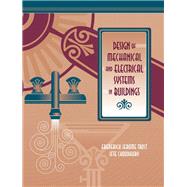
Note: Supplemental materials are not guaranteed with Rental or Used book purchases.
Purchase Benefits
What is included with this book?
| Lighting | |
| Light and Perception | |
| Lighting Metrics | |
| Lamps | |
| Lighting Design | |
| Sunlight and Daylight | |
| Design Examples | |
| Lighting Numbers | |
| Electrical | |
| Electrical Basics | |
| Generation and Distribution | |
| Residential Electrical Design | |
| Commercial Electrical Design | |
| Example Office Building | |
| Energy Profiles | |
| Heating, Ventilating, And Air Conditioning | |
| Terms, Comforts, and Psychrometrics | |
| Heat Loss and Gain | |
| Heating and Cooling Equipment | |
| Building Air Conditioning | |
| Air Distribution | |
| Annual Costs | |
| Efficient Designs | |
| Demand, Solar Heating, and First Estimates | |
| Water And Plumbing | |
| Water Supply and Wastewater | |
| Site and Roof Water Drainage | |
| Building Plumbing | |
| Plumbing Examples | |
| Water Supply for Fire Protection and HVAC | |
| Index | |
| Table of Contents provided by Publisher. All Rights Reserved. |
The New copy of this book will include any supplemental materials advertised. Please check the title of the book to determine if it should include any access cards, study guides, lab manuals, CDs, etc.
The Used, Rental and eBook copies of this book are not guaranteed to include any supplemental materials. Typically, only the book itself is included. This is true even if the title states it includes any access cards, study guides, lab manuals, CDs, etc.